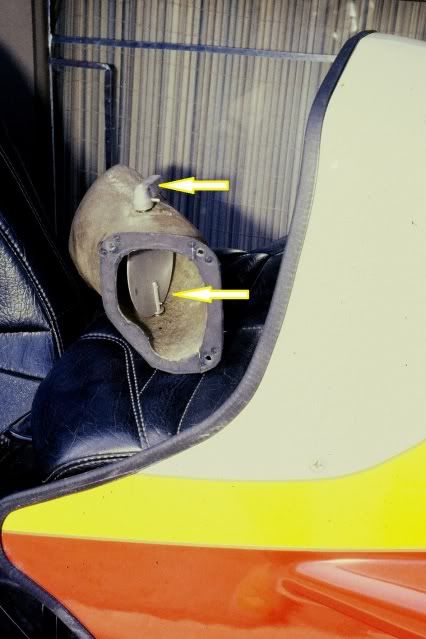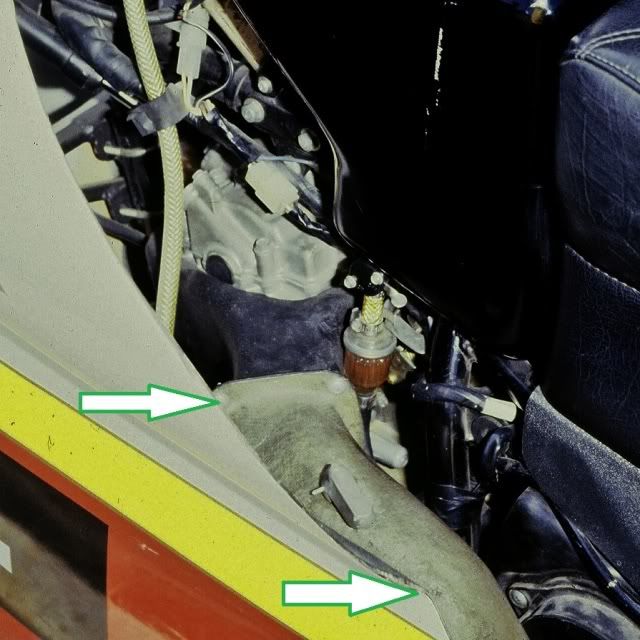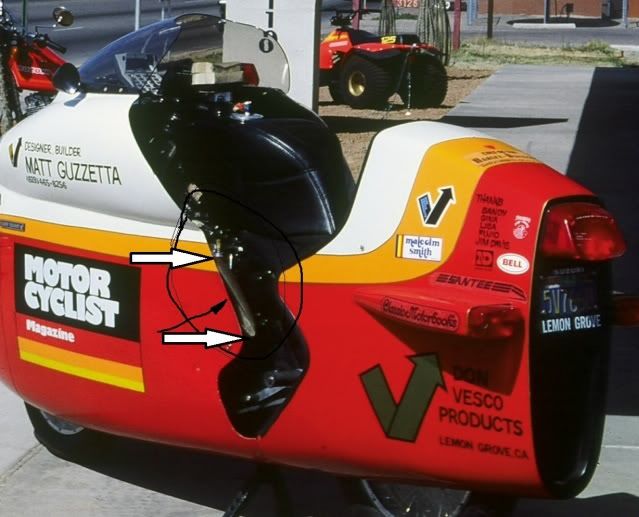Tom,
I tried to download some photos last night to answer your question about the cooling exhaust but the computer was not cooperating!

Tonight, the uploading is working

We did not have an outlet through the body of the shell, I made a shaped exhaust duct that started out round and ended at the edge of the shell just ahead of my knee on the left hand side. I do not have a good pic of that section, but these pics should give you some indication of what we did. The idea of coming out the side at an angle can work as there should be air rushing by enough to possible add some suction to that area. If nothing else, it should allow the air to exit with little or no back pressure. Here are a couple of pics of the butterfly valve (you shouldn't need it) and a small view of the end of the exit area.

This is a view of the intake segment that connects to the NACA supplied plenum that is actually part of the shell. This also shows one of the 2 butterfly valves we installed to help keeping the motor in the correct temp range...we were after mileage, not ultimate speed. We did run the bike at El Mirage with the cooling system and it worked well on the high speed runs.

This photo shows the cooling exhaust segment with the butterfly valve lever on the top. It kind of shows the unit directing the flow to the edge of the shell.

This photo shows a bit of the "fan" end of the segment that dumped the air along the edge of the shell at the rider's leg cutout. If the cooling outlet is dumping thru or at the edge of the shell, you should be good. Just watch the temp gauge and compare it to riding the bike without a fairing. It should be an interesting experiment.
We did a shield wrap on a Yoshimura road racing Suzuki and the only part we were able to use was the segment that shielded the carbs and that was actually a good thing as it kept the carbs cool. They gave us the wrong cylinders to build the shell on and weren't able to use the front section, bummer.
I hope this is of some help. It should be really interesting to see how well it works. The more you can direct the air into the fins, the better the cooling.
Kepp up the good work!
Matt Guzzetta